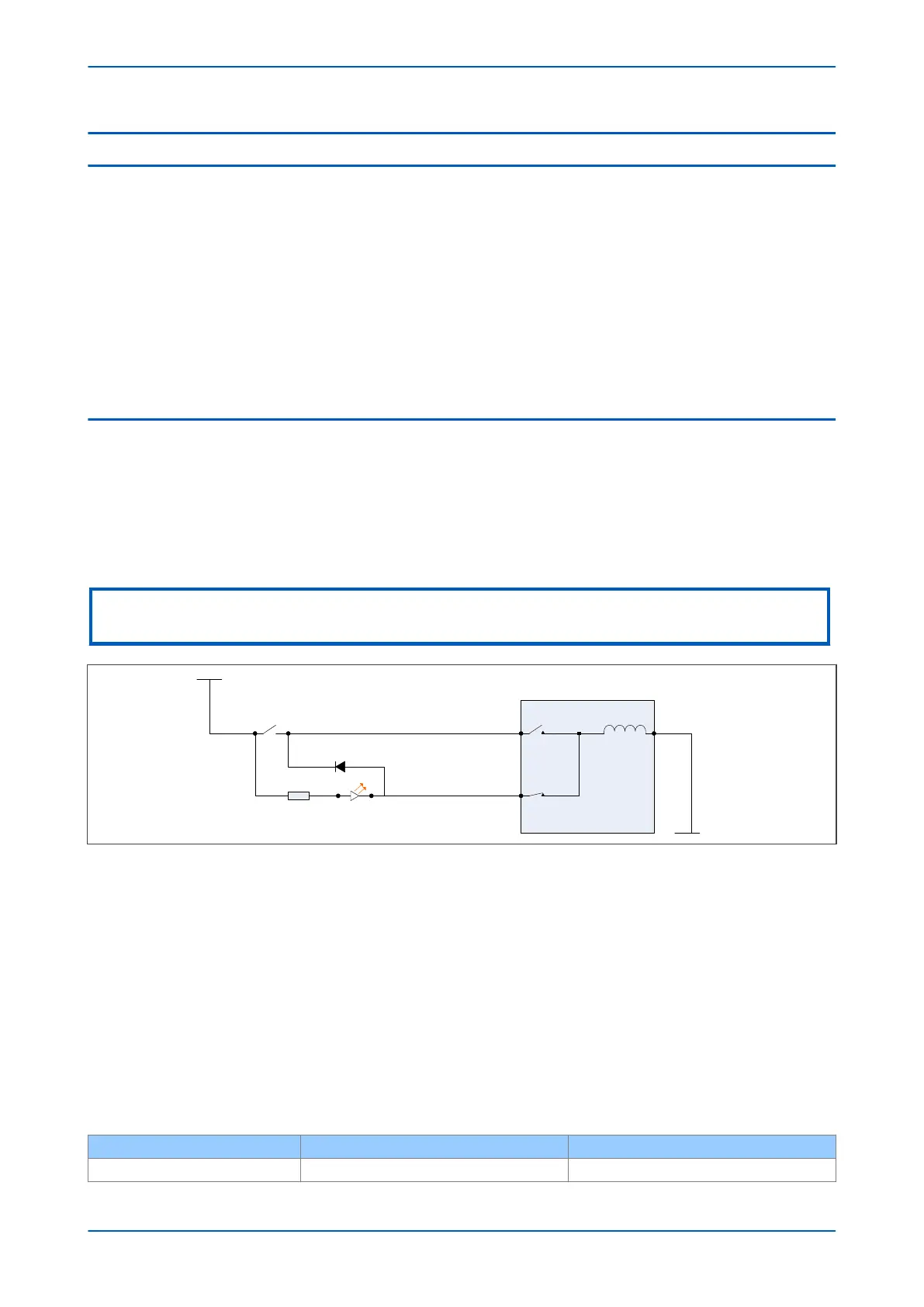5 TRIP CIRCUIT SUPERVISION
In most protection schemes, the trip circuit extends beyond the IED enclosure and passes through components
such as links, r
elay contacts, auxiliary switches and other terminal boards. Such complex arrangements may
require dedicated schemes for their supervision.
There are two distinctly separate parts to the trip circuit; the trip path, and the trip coil. The trip path is the path
between the IED enclosure and the CB cubicle. This path contains ancillary components such as cables, fuses and
connectors. A break in this path is possible, so it is desirable to supervise this trip path and to raise an alarm if a
break should appear in this path.
The trip coil itself is also part of the overall trip circuit, and it is also possible for the trip coil to develop an open-
circuit fault.
This product supports a number of trip circuit supervision (TCS) schemes.
5.1 TRIP CIRCUIT SUPERVISION SCHEME 1
This scheme provides supervision of the trip coil with the CB open or closed, however, it does not provide
super
vision of the trip path whilst the breaker is open. The CB status can be monitored when a self-reset trip
contact is used. However, this scheme is incompatible with latched trip contacts, as a latched contact will short out
the opto-input for a time exceeding the recommended Delayed Drop-off (DDO) timer setting of 400 ms, and
therefore does not support CB status monitoring. If you require CB status monitoring, further opto-inputs must be
used.
Note:
A 52a CB auxiliary contact follows the CB position. A 52b auxiliary contact is the opposite.
V01214
52A
52B
R
1
Trip Output Relay
+
ve
-ve
Opto-input
B
locking diode
Circuit Breaker
Trip coil
Trip path
Figure 146: TCS Scheme 1
When the CB is closed, super
vision current passes through the opto-input, blocking diode and trip coil. When the
CB is open, supervision current flows through the opto-input and into the trip coil via the 52b auxiliary contact.
This means that Trip Coil supervision is provided when the CB is either closed or open, however Trip Path
supervision is only provided when the CB is closed. No supervision of the trip path is provided whilst the CB is open
(pre-closing supervision). Any fault in the trip path will only be detected on CB closing, after a 400 ms delay.
5.1.1 RESISTOR VALUES
The supervision current is a lot less than the current required by the trip coil to trip a CB. The opto-input limits this
super
vision current to less than 10 mA. If the opto-input were to be short-circuited however, it could be possible for
the supervision current to reach a level that could trip the CB. For this reason, a resistor R1 is often used to limit the
current in the event of a short-circuited opto-input. This limits the current to less than 60mA. The table below
shows the appropriate resistor value and voltage setting for this scheme.
Trip Circuit Voltage Opto Voltage Setting with R1 Fitted Resistor R1 (ohms)
48/54 24/27 1.2k
P54A/B/C/E Chapter 13 - Supervision
P54xMED-TM-EN-1 293
